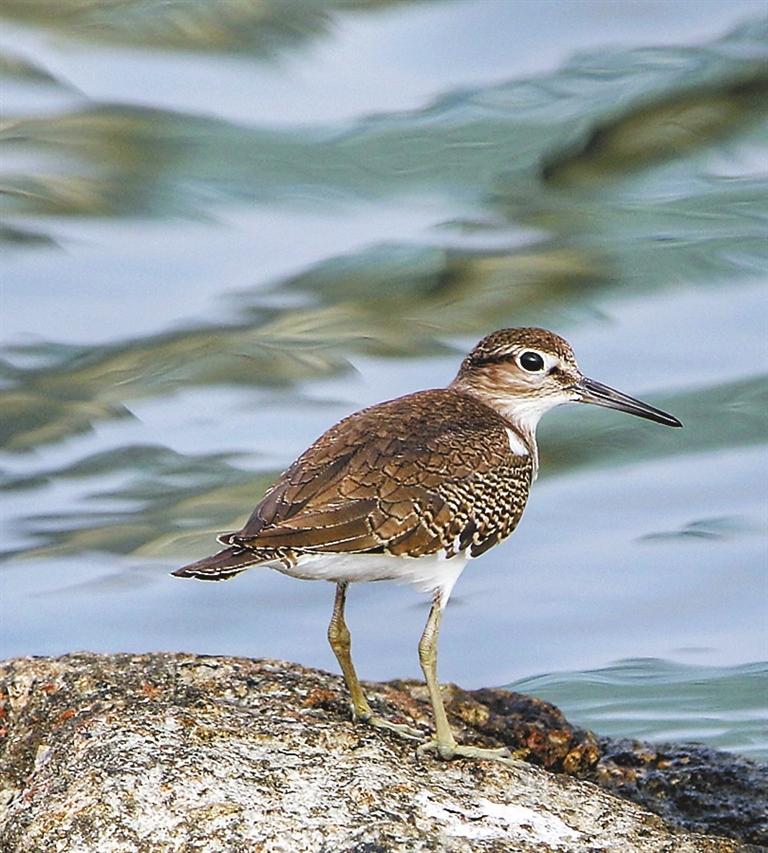
Around 20 centimeters in length and with a 40-centimeter wingspan, this short-legged small bird is yet another typical visitor of our beautiful Shenzhen. With a white eye ring and a brown patch across the eye, the common sandpiper (Actitis hypoleucus) is brown on the top of its body and white on the under parts. Its breast features a set of dark brown patches, and the bird also possesses dark brown markings over the upper parts of the body. A white bar can be seen across the wings when it’s flying; when not in flight, the tail appears longer than its wings. Three remarkable things about this small bird are its running speed, an unstoppable up-and-down movement of its tail and a constant bobbing of its head. It inhabits northern regions from East Europe and Central Asia to Japan. During the winter months, it migrates to warmer locations in Africa and South Asia, including Shenzhen. It is common to spot these beautiful birds along the margins of rocky water bodies such as rivers, lakes, ponds, and ocean shores. In Shenzhen Bay Park, they can be seen foraging for invertebrate animals such as insects, spiders, mollusks and crustaceans. They also eat small vertebrates like frogs or small fish. When unable to find animal food sources, they feed on plants. Another interesting fact about the common sandpiper is that they have a high degree of site fidelity, meaning they are very likely to return to the areas they previously visited. Thus, over the years you will likely see them visiting the exact same locations during their migration stopovers. Their breeding season runs between May and June when they build their nests and lay up to four eggs per clutch once a year. Both parents will incubate the eggs for about three weeks. After a further four weeks of feeding by both parents, the youngsters are ready to go their own way. This and dozens of other species are returning to the same locations in our city year after year. We must preserve the shores and water bodies and maintain a healthy ecosystem, so that these birds can keep bringing their presence to Shenzhen. | 
